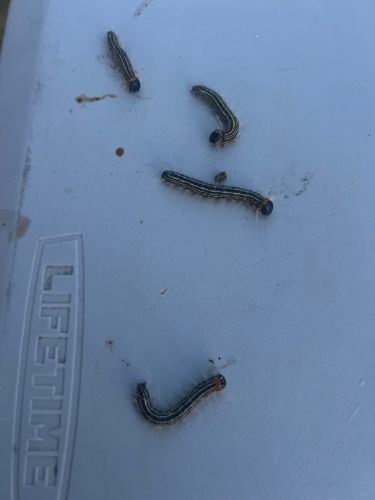Eastern Tent Caterpillar
Scientific Name: Malacosoma americanum
Order & Family: Lepidoptera (Order), Lasiocampidae (Family)
Size: Caterpillars can grow up to 2.5 inches (6 cm) in length. Adult moths have a wingspan of about 1 to 2 inches (2.5 to 5 cm).

Natural Habitat
Eastern Tent Caterpillars are commonly found in temperate forests, woodlands, orchards, and suburban areas across eastern North America, wherever their host trees are abundant.
Diet & Feeding
They primarily feed on the leaves of deciduous trees and shrubs, with a strong preference for trees in the Rosaceae family, such as cherry, apple, crabapple, and peach. They can also feed on oak, maple, and other hardwoods.
Behavior Patterns
Eastern Tent Caterpillars are known for constructing large, silken 'tents' in the crotches of trees, often in cherry, apple, and crabapple trees. These tents serve as shelter and a gathering place for the caterpillars, especially during cooler temperatures or at night. They emerge from the tent to feed on leaves during the day, following chemical trails. They are social caterpillars.
Risks & Benefits
Potential risks include defoliation of host trees, which can weaken the trees and make them more susceptible to other stressors. While they can be a nuisance in urban and agricultural settings due to their webs and defoliation, they are generally not fatal to healthy mature trees. The caterpillars themselves are not venomous to humans, but some people might experience skin irritation upon contact with their hairs. They can serve as a food source for some birds and parasitic insects, playing a role in the food web.
Identified on: 8/10/2025